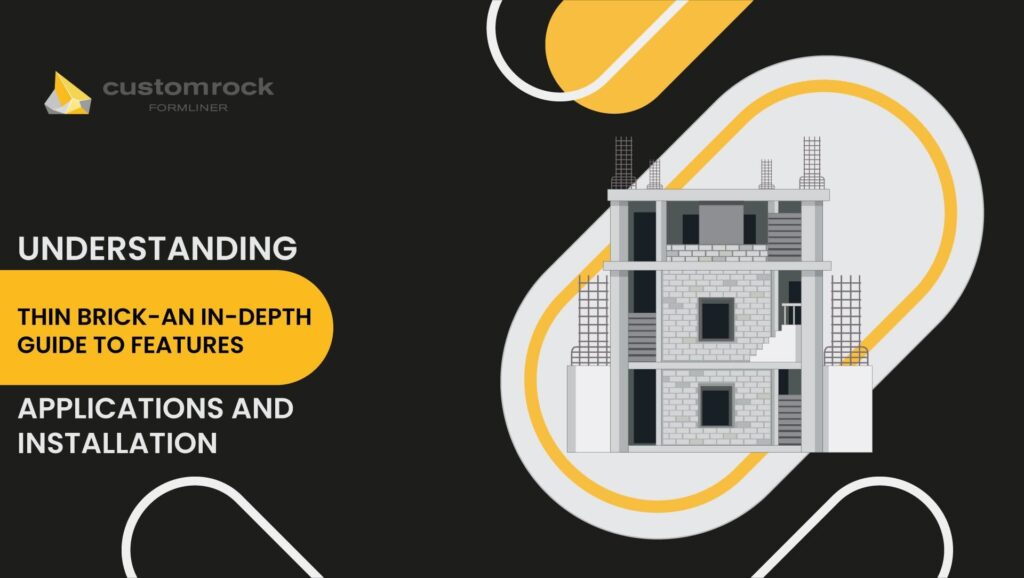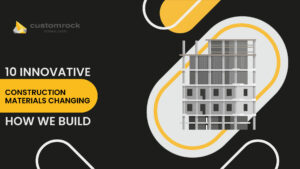Thin brick is revolutionizing modern construction. This versatile material mimics the appearance of traditional bricks while offering several advantages. Its lightweight nature and ease of installation make it a popular choice in contemporary architecture.
Key takeaway: Thin brick offers a perfect blend of aesthetic appeal and practical benefits, making it ideal for various architectural applications.
In this article, you’ll learn:
- What thin brick is and its unique characteristics
- Why thin brick is an excellent choice for construction projects
- Various applications of thin brick in residential and commercial settings
- A detailed guide on how to install thin brick efficiently and effectively
What is Thin Brick?
Thin brick is a lightweight construction material designed to mimic the appearance of traditional bricks. Unlike conventional bricks, which are several inches thick, thin bricks typically measure around 0.5 inches in thickness. This significant reduction in size provides several advantages, including ease of handling and installation.
– Explore formliner pricing and what impacts total cost.
– Learn how to specify formliners correctly for your project.
– Compare single-use vs. multi-use formliners to choose the right fit.
– See DOT formliners designed for transportation and public works projects.
Unique Characteristics of Thin Brick
- Lightweight: The reduced thickness makes thin bricks much lighter than traditional bricks, easing the transportation and installation process.
- Versatility: Available in a variety of colors, textures, and finishes, thin brick can replicate the look of materials such as stone or wood.
- Cost-Effective: Less raw material is used in manufacturing thin brick, making it a more economical option without sacrificing aesthetic appeal or durability.
Types of Thin Brick
Several types of thin brick are available to suit different applications:
- Thin Brick Veneer Commonly used for both interior and exterior walls.
- Offers the classic look of full-sized brick at a fraction of the weight.
- Thin Brick Tile Ideal for flooring and smaller surfaces like backsplashes.
- Provides a durable and visually appealing finish.
- Thin Brick Wall Panels Prefabricated panels that incorporate multiple thin bricks.
- Simplifies installation by reducing the need for individual brick placement.
- White Thin Brick Features a clean, modern aesthetic perfect for contemporary designs.
- Available in various shades of white to fit different design schemes.
Standard Dimensions and Variations
The standard dimensions for thin bricks are approximately:
- Length: 7.5 inches
- Width: 2.25 inches
- Thickness: 0.5 inches
However, these sizes may vary depending on the manufacturer. Some manufacturers offer custom sizes to meet specific project requirements.
Understanding these basic elements helps you make informed decisions when choosing thin brick for your construction projects.
Why Choose Thin Brick for Your Construction Projects?
Lightweight Construction
One of the main advantages of thin brick is its lightweight nature. Traditional bricks are bulky and heavy, making them more challenging to handle and install. In contrast, thin bricks are much lighter, which allows for easier handling during installation. This lightweight characteristic means that thin brick can be used in places where traditional bricks might not be feasible due to weight constraints.
Diverse Aesthetic Options
Thin brick offers a wide range of aesthetic options. Whether you’re aiming for a rustic look or a sleek, modern facade, thin brick provides designers with the versatility to achieve these desired appearances without compromising on quality. Available in various colors, textures, and finishes, you can find thin brick that mimics other materials like stone or even wood. This diversity enables you to customize spaces to fit specific design themes seamlessly.
Cost-Effective Solution
Thin brick is also a cost-effective construction material. Its smaller size and reduced weight mean less raw material usage compared to traditional bricks. Additionally, the ease of handling and installation can significantly cut down labor costs. The use of specific mortar for thin brick allows it to adhere well to various surfaces like drywall and plywood, reducing the need for extensive preparation work.
- Less Raw Material: The production of thin brick requires fewer resources.
- Reduced Labor Costs: Easier handling translates into less time and effort during installation.
- Minimal Waste: Precise manufacturing processes result in less material waste.
Choosing thin brick for your construction projects combines aesthetic flexibility with practical benefits such as ease of installation and cost savings, making it an ideal choice for both residential and commercial applications.
Exploring the Versatile Applications of Thin Brick
Thin brick is a highly adaptable material that can be used in both residential and commercial settings. Its ability to enhance interior design and exterior facades makes it a favorite among architects and designers.
Interior Design
Accent Walls
- Thin brick accent walls add texture and visual interest to living rooms, bedrooms, or kitchens.
- Available in various colors and finishes, they can match any design theme from rustic to modern.
Fireplaces and Backsplashes
- Transform your fireplace into a focal point with thin brick cladding.
- Kitchen backsplashes made from thin brick offer an easy-to-clean surface that also provides a stylish backdrop.
Exterior Facade
Building Exteriors
- Ideal for upgrading the facade of homes or commercial buildings.
- Durable and weather-resistant, making it a practical choice for long-term use.
Entryways
- Enhance curb appeal with a welcoming thin brick entryway.
- Customizable to fit any architectural style.
Flooring Options
Indoor Flooring
- Thin brick can be used for indoor flooring, providing a unique aesthetic that mimics traditional brick floors.
- Suitable for high-traffic areas due to its durability.
Outdoor Patios
- Create charming outdoor spaces like patios or walkways.
- Offers slip-resistance, making it safe for outdoor usage.
Landscaping Features
Garden Paths
- Thin brick paths can guide visitors through gardens while adding an element of classic beauty.
- Easy to install and maintain, making them an excellent DIY project.
Retaining Walls
- Construct retaining walls that blend naturally with the landscape.
- Provides both functional support and aesthetic enhancement.
Thin brick’s versatility allows it to be used in many applications, each bringing its timeless charm into different environments. This adaptability ensures that whether you’re working on an interior design project or enhancing an exterior facade, thin brick will meet your needs.
A Step-by-Step Guide to Installing Thin Brick Like a Pro!
1. Preparing Your Wall Surface for a Flawless Finish
Proper wall surface preparation is essential to ensure the successful installation and longevity of your thin brick project. Skipping this step can lead to adhesion problems and an uneven finish.
Key steps in wall surface preparation:
- Clean the Surface: Remove any dirt, dust, or grease from the wall. Use a mild detergent and water solution, then allow the wall to dry completely.
- Repair Any Damages: Fill holes, cracks, or uneven sections with appropriate filler material. Sand down any rough patches to achieve a smooth surface.
- Check for Moisture: Ensure the wall is dry. Moisture can weaken the adhesive bond and cause long-term damage.
- Prime or Seal the Surface: Depending on the substrate, apply a primer or sealant to create an ideal bonding surface. For example, use a masonry primer on concrete walls and a wood sealer on plywood surfaces.
Example: For drywall surfaces, you might use a high-quality latex-based primer to ensure proper adhesion of the thin brick mortar.
By meticulously preparing your wall surface, you set the stage for a durable and visually appealing thin brick installation. This groundwork ensures that your project remains robust and attractive for years to come.
2. The Ultimate Step-by-Step Installation Process You Need to Follow!
Installation Guide for Thin Brick
Installing thin brick can be a rewarding project when done correctly. Here’s a detailed step-by-step installation process to ensure your thin brick application looks professional and lasts for years.
Step 1: Gather Your Materials and Tools
To start, you’ll need:
- Thin bricks
- Thinset mortar
- Notched trowel
- Level
- Spacer clips
- Grout
- Grout float
- Metal lath (for plywood substrates)
- Backer board or drywall (for wall surfaces)
- Measuring tape
- Chalk line
Step 2: Preparing the Substrate
For Plywood Surfaces:
- Attach metal lath securely to the plywood.
- Apply a scratch coat of mortar over the lath, ensuring it is evenly spread.
- Let the scratch coat cure for at least 24 hours.
For Drywall Surfaces:
- Ensure the drywall is clean and free of dust.
- Use a notched trowel to apply a layer of thinset mortar directly onto the surface.
Step 3: Layout Planning
- Measure and mark guidelines on your wall using a chalk line.
- Plan your layout by dry-fitting the thin bricks, starting from the bottom center and working outward.
Step 4: Applying Thinset Mortar
- Using a notched trowel, spread the thinset mortar over a small section of your substrate.
- Hold the trowel at a 45-degree angle to create grooves in the mortar for better adhesion.
Step 5: Placing Thin Bricks
- Press each brick firmly into the mortar, aligning with your chalk lines.
- Use spacer clips between bricks to maintain even gaps.
- Continue placing bricks row by row, checking regularly with a level.
Step 6: Cutting Bricks for Edges and Corners
- Measure and mark bricks that need cutting for edges or corners.
- Use a wet saw or tile cutter for precise cuts.
Step 7: Filling Joints with Grout
- After all bricks are in place, allow them to set for at least 24 hours.
- Mix grout according to package instructions.
- Use a grout float to fill joints, pressing grout into spaces between bricks.
Step 8: Cleaning Excess Grout
- Wipe away excess grout from brick surfaces using a damp sponge.
- Allow grout to cure per manufacturer’s recommendations before touching up any areas if needed.
This method ensures you achieve a flawless finish while working with various substrates like plywood or drywall effectively.
3. Post-Installation Care: Keeping Your Thin Brick Beautiful Over Time!
Maintaining the beauty of your thin brick installation requires attention to detail during the post-installation phase. Proper care will ensure durability and aesthetic appeal.
Filling Joints with Grout
- Vacuum Dust: Before applying grout, vacuum the wall surface thoroughly to remove any dust and debris. This step is crucial for ensuring a clean and secure bond.
- Choose the Right Grout: Select a grout that complements your thin brick’s color and texture. The right grout enhances the overall look of your installation.
- Applying Grout: Use a grout bag or a trowel to fill the joints between the bricks evenly. Make sure to press the grout firmly into the joints to avoid gaps.
- Smooth and Clean: After filling, smooth out the joints with a pointing tool or your finger for a uniform finish. Wipe away excess grout from the brick surfaces using a damp sponge before it dries.
Sealing for Longevity
- Sealant Application: Applying a high-quality sealant can protect your thin bricks from moisture, stains, and wear. Follow the manufacturer’s instructions for best results.
- Regular Cleaning: Maintain your thin brick surfaces by cleaning them regularly with mild soap and water. Avoid harsh chemicals that may damage the finish.
Proper post-installation care not only preserves the appearance but also extends the life of your thin brick installation.
Conclusion: Embracing the Timeless Beauty of Thin Brick in Modern Construction Projects
Incorporating thin brick into your construction projects offers a myriad of benefits. Architects and builders can achieve the classic look of traditional bricks without the associated weight and labor costs. The versatility and cost-effectiveness of thin brick make it an ideal choice for both residential and commercial applications.
Key Benefits:
- Aesthetic Appeal: Mimics traditional bricks, offering diverse colors and textures.
- Ease of Installation: Lightweight nature simplifies handling and installation.
- Cost-Efficiency: Reduced raw material usage and labor requirements.
Thin brick provides a durable, attractive, and practical solution for modern construction needs. Its ability to enhance various settings ensures that it remains a valuable component in contemporary architecture. Embrace thin brick to elevate your next project with timeless beauty and efficiency.
FAQs (Frequently Asked Questions)
What is thin brick and how does it differ from traditional bricks?
Thin brick is a modern construction material that offers a unique blend of aesthetic appeal and practical benefits. Unlike traditional bricks, thin bricks are lighter and can be used in various applications without the bulkiness associated with standard bricks.
What types of thin brick are available in the market?
There are several types of thin brick available, including veneer, tile, wall panels, and white thin brick. Each type comes with standard dimensions and variations depending on the manufacturer, allowing for diverse design options.
Why should I choose thin brick for my construction projects?
Thin brick is advantageous due to its lightweight nature, which simplifies handling and installation. It also offers a wide range of aesthetic options while being cost-effective due to reduced raw material usage and lower labor requirements during installation.
In what applications can thin brick be used?
Thin brick can enhance both interior and exterior spaces in various settings, such as residential homes and commercial buildings. Specific applications include accent walls, exterior facades, fireplaces, backsplashes, flooring options, and landscaping features like garden paths or retaining walls.
What steps should I follow to install thin brick properly?
To install thin brick effectively, start by preparing the wall surface to ensure proper adhesion. Follow a detailed step-by-step installation process based on your chosen substrate (e.g., plywood or drywall). After installation, maintain your thin bricks by filling joints with grout after vacuuming dust from the wall surface.
What are the post-installation care tips for maintaining thin bricks?
Post-installation care involves ensuring that joints are filled with grout after cleaning the wall surface. Regular maintenance will help keep your thin brick looking beautiful over time and preserve its timeless charm in your construction projects.







